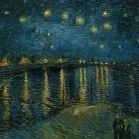Selvedge Denim
-
hello 2024!
supertalk is free to browse as a guest. You need to be a member to participate in discussions or buy and sell on the classifieds.
Classifieds listings are now free for members.
supertalk is now upgraded to //// supertalk 8 ////
______________________________________
Current new membership is $US 12 ONE TIME FEE. NO RENEWAL FEE.
______________________________________
You can also become a premium superseller or supermember. Businesses who want to promote their brand and products need to become a supersponsor. superfuture® is privately owned and has been online continuously for 25 years. supertalk has been online for 21 years and is a digital cockroach that will survive all current and future apocalypses.
-
Top 10 Active Viewed Topics
-
- 26761 replies
- 6025536 views
-
- 24174 replies
- 5986105 views
-
- 24723 replies
- 4357858 views
-
- 22889 replies
- 3399476 views
-
- 13637 replies
- 3240426 views
-
- 10644 replies
- 3109029 views
-
- 21140 replies
- 2743146 views
-
- 13253 replies
- 2690451 views
-
- 8532 replies
- 2367492 views
-
- 11367 replies
- 2349605 views
-










Recommended Posts
Join the conversation
You can post now and register later. If you have an account, sign in now to post with your account.